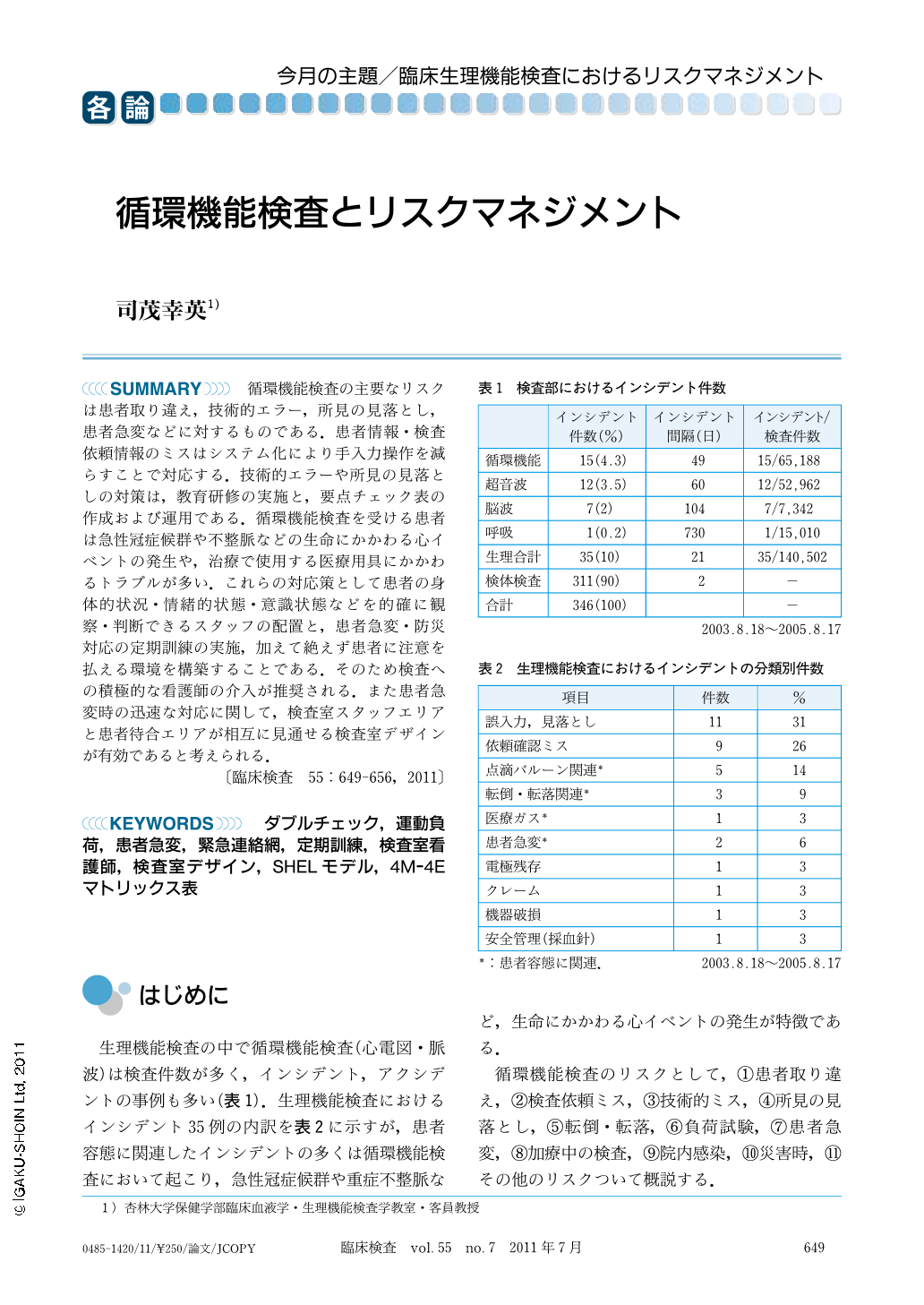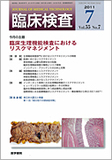Japanese
English
- 有料閲覧
- Abstract 文献概要
- 1ページ目 Look Inside
- 参考文献 Reference
循環機能検査の主要なリスクは患者取り違え,技術的エラー,所見の見落とし,患者急変などに対するものである.患者情報・検査依頼情報のミスはシステム化により手入力操作を減らすことで対応する.技術的エラーや所見の見落としの対策は,教育研修の実施と,要点チェック表の作成および運用である.循環機能検査を受ける患者は急性冠症候群や不整脈などの生命にかかわる心イベントの発生や,治療で使用する医療用具にかかわるトラブルが多い.これらの対応策として患者の身体的状況・情緒的状態・意識状態などを的確に観察・判断できるスタッフの配置と,患者急変・防災対応の定期訓練の実施,加えて絶えず患者に注意を払える環境を構築することである.そのため検査への積極的な看護師の介入が推奨される.また患者急変時の迅速な対応に関して,検査室スタッフエリアと患者待合エリアが相互に見通せる検査室デザインが有効であると考えられる.
Major risk factors encountered in circulatory function tests are misidentification of patients, technical errors, failure to notice findings and sudden changes in the patient's condition. The risk countermeasures we take are as follows:Reducing manual entry of patient or test information by systemization to avoid making mistakes. Conducting training seminars and making check lists to avoid technical errors and failure to notice certain findings. The patients involved in circulatory function tests often get into trouble because of the occurrence of cardiac events such as acute coronary syndrome and life-threatening arrhythmia, or medical accidents. To prevent these problems, we consider the need for staff members who can care for patients in an appropriate manner on the basis of precise information about physical condition, emotional condition and state of consciousness, and training for prevention of disaster or sudden changes in the patient's condition and the environment that the staff can utilize when caring for the patients. We believe that nurses should be actively involved in the laboratory. We also consider the effectiveness of laboratories designed for staff and patients in the waiting room to be able to see each other.

Copyright © 2011, Igaku-Shoin Ltd. All rights reserved.


